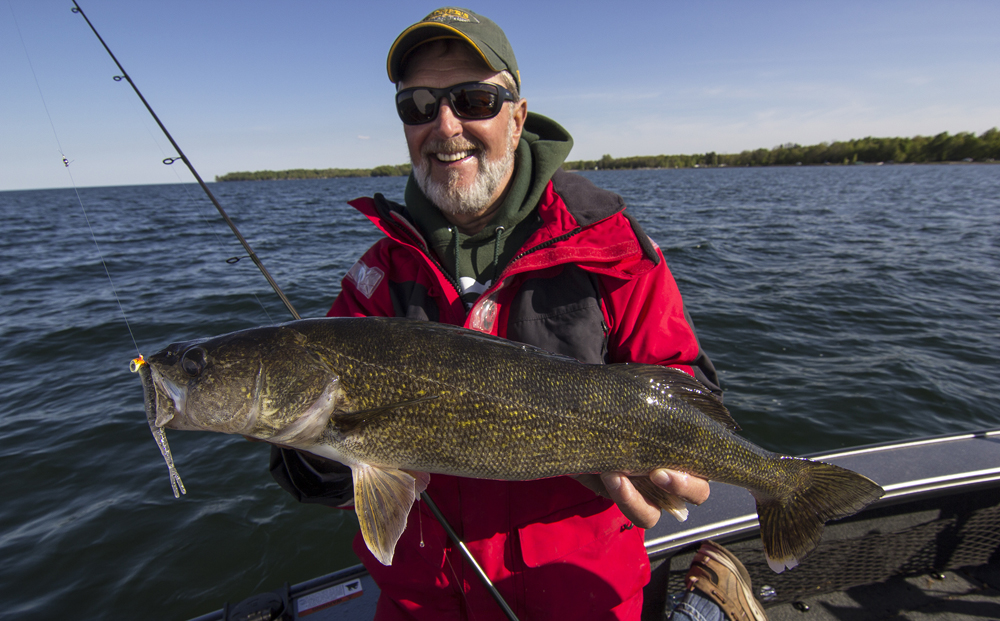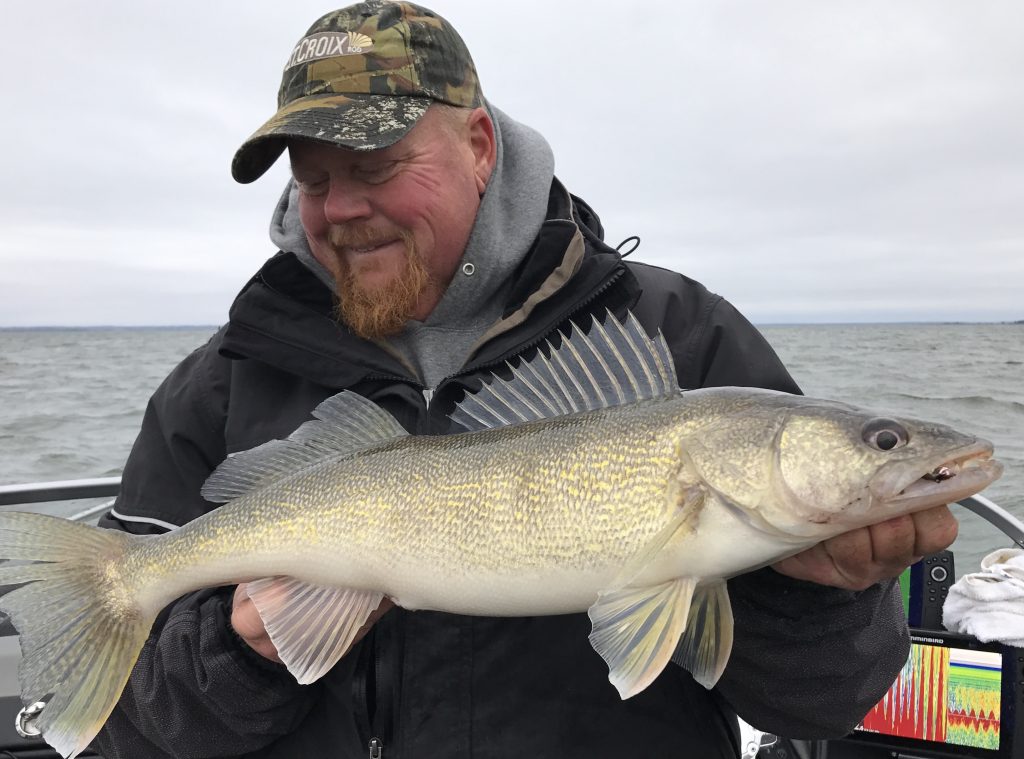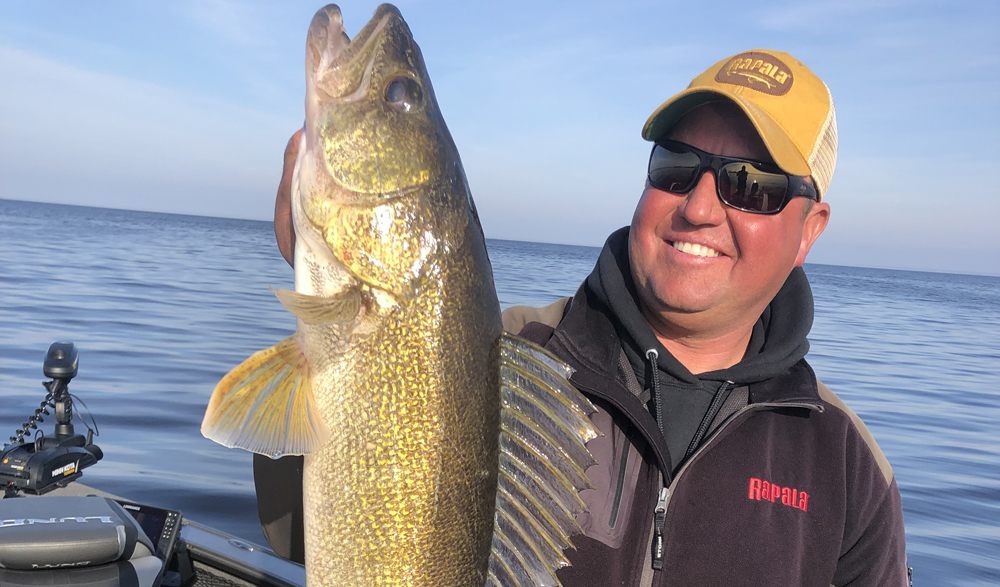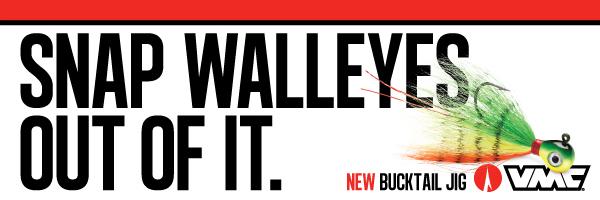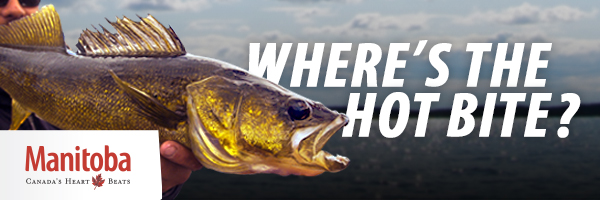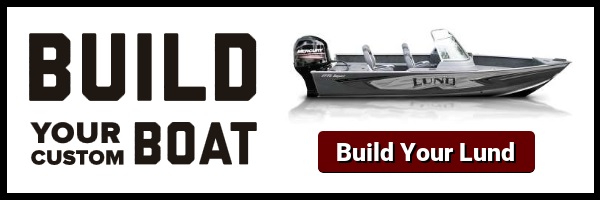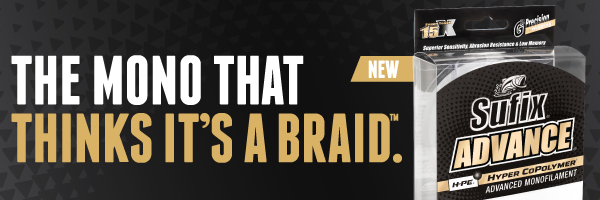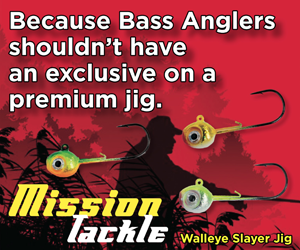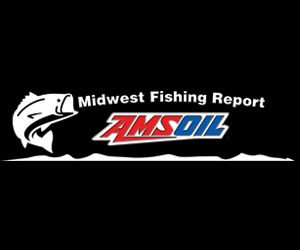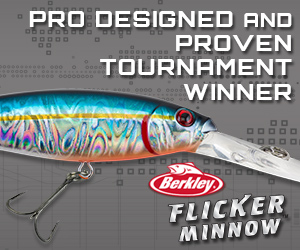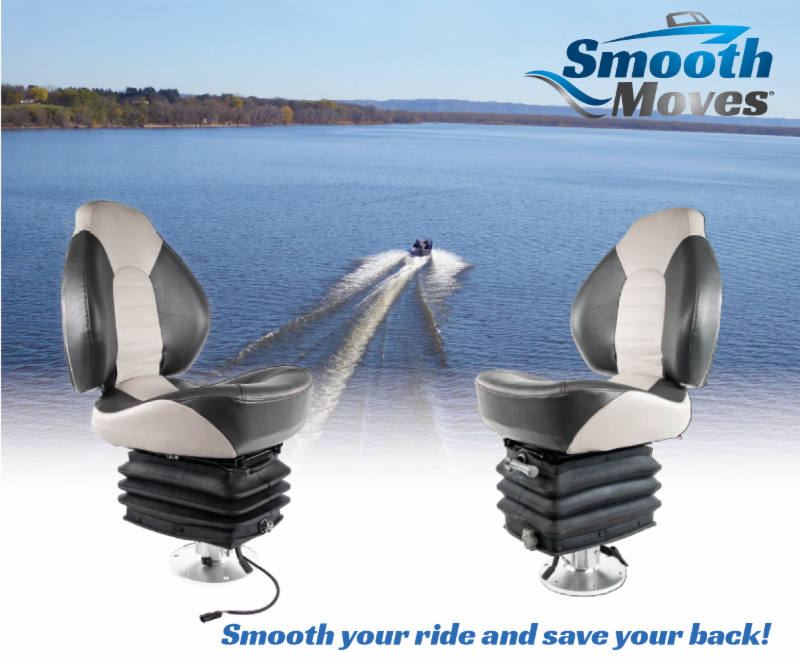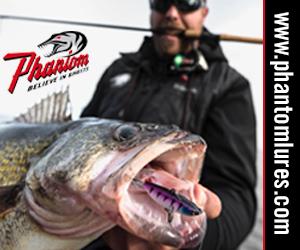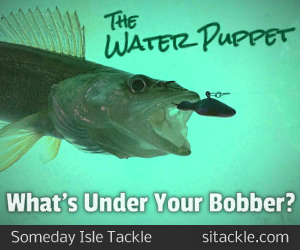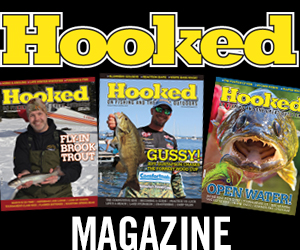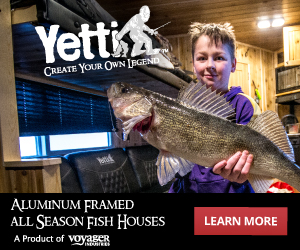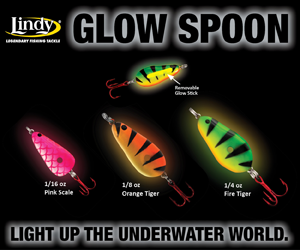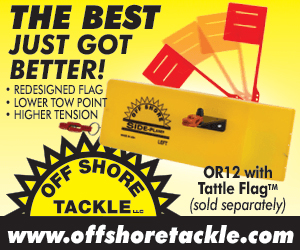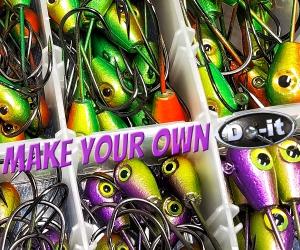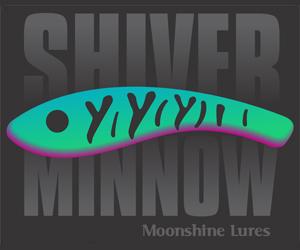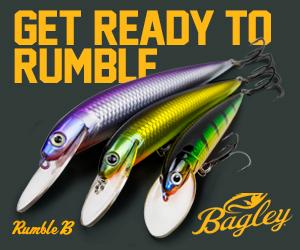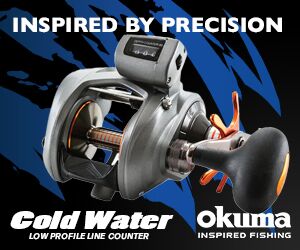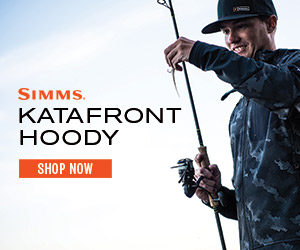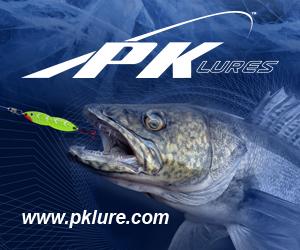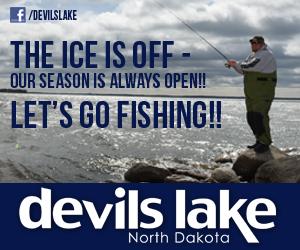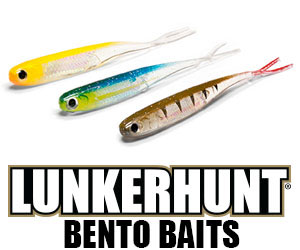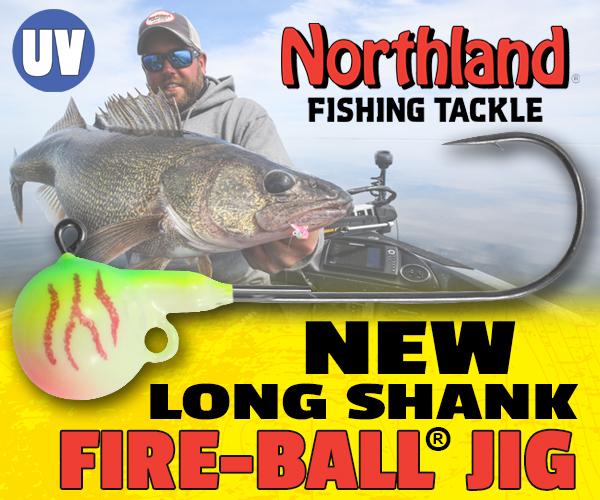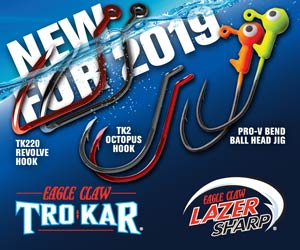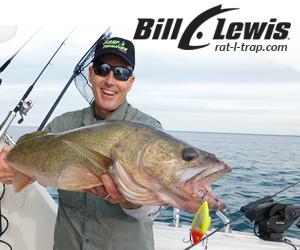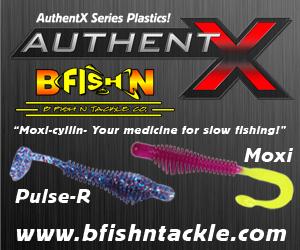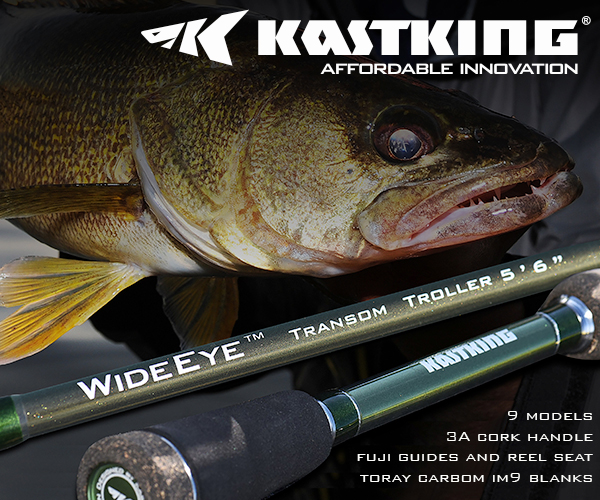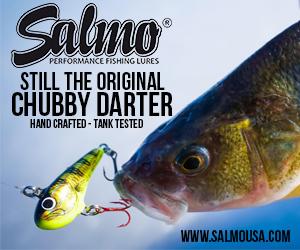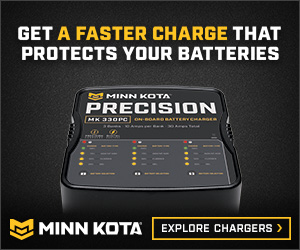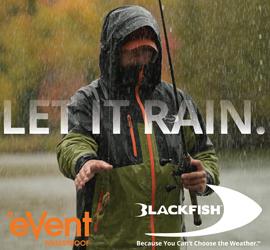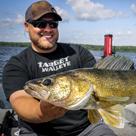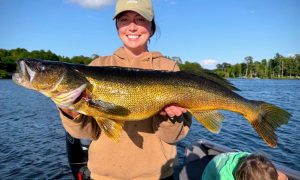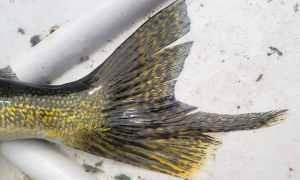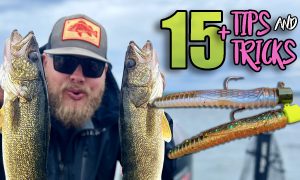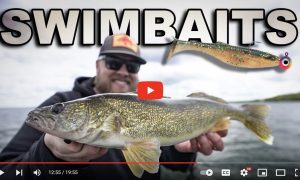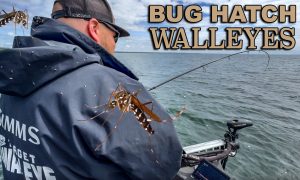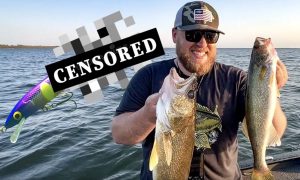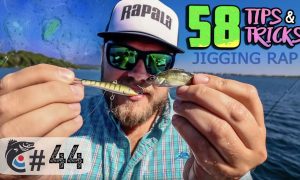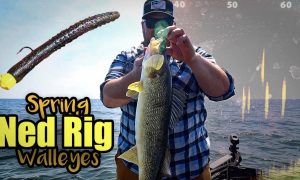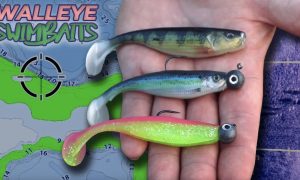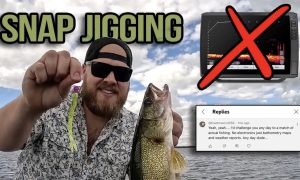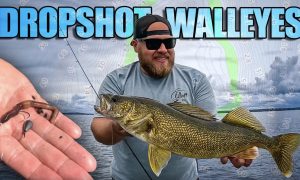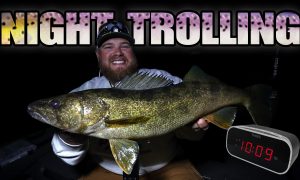
Doin’ things a bit differently (and a day early) with this Special Issue! We brought in Fishing Hall of Famer + media legend Steve Quinn [!] and set him loose on the topic of: Early-season walleye locations and presentations.
Steve tracked down some of the best fish-catchers in the biz to get the scoop on how they plan to #TargetWalleye during this chilly, high-water, late ice-out spring. Hope you put these tips to good use this weekend — thx much for reading! Handing over the reins now. – Brett
By Steve Quinn
“The time is now. Just go. Go! I don’t care how. Marvin K. Mooney will you please go now!” This famous line from Dr. Seuss is good advice for walleye anglers everywhere right now.
Walleye seasons in most northern states are just opening up. Or else — where no season exists — winter has finally released its grasp. And after the winter we just had, anglers deserve some fine spring fishing. So let’s make the best of it with tips on walleye location and presentation from a few of the most knowledgeable anglers on the scene [in no particular order]:
1. Al Lindner talks reaction bites
For almost 60 years, Al Lindner has been uncovering new fishing tricks and sharing them with anglers everywhere; first as a guide, and for the past 45 years, as the ultimate fishing educator with In-Fisherman and now Lindner Media Productions:
> Al: “After the winter we just endured, every walleye angler is eager to get on the water and catch some fish. Across the north, walleye seasons open in mid-May, or conditions are just getting consistent where the season is open year-round. After a lifetime of chasing early-season ‘eyes, I can tell you that nothing beats a jig. But there’s a lot more to it than that.
> “Anglers sometimes make the mistake of looking for fish on deeper structure or humps. In fact, the fish typically remain shallow — between shore and the first breakline — until the water warms into the upper-60°F range. They’re most active in low-light conditions, particularly in clear water. Although post-spawn walleyes may be lethargic, you can wake ‘em up with erratic action, what we call triggering a reaction bite.
> “Some guys have a hard time believing that artificial lures outfish livebait for walleyes. But it’s more efficient, since you can fish faster and cover more water and you can catch fish that turn down minnows. You’re fishing, rather than dipping into the bait bucket, and you tend to catch bigger walleyes as well. The key is to make the lure move erratically…not drag.”
Presentation particulars:
> “After experimenting with lots of lures, I’ve found a few that are deadly at this time of year. I’m a fan of the VMC Neon Moon Eye Jig. It’s aspirin-shaped, so it falls faster than a ball-head jig and also tends to veer off to the side or roll, which is the kind of triggering action walleyes can’t resist.
> “I match it with a 4” flat-sided split-tail minnow or else a flat-sided boot-tail swimbait since their flatter sides enhance this action. For years, we used curly-tail grubs, but they stabilize your presentation….not what you want in this situation.
> My third option is a new on the scene VMC’s Bucktail Jig — I fish it with the same trailers or by itself. The colors on these jigs are brilliant and bucktail offers a unique action, as it flares when it hits bottom. A 1/4-oz jig generally works best, since you want it to fall fast and pop abruptly. I start my day with three jig rods on deck: one with a split-tail minnow, one with a boot-tail, and one with the VMC Bucktail.”

> “Rod and line are important to make long casts, get the best erratic action from a jig, set the hook easily, and land fish. St. Croix’s 6’ 8” Eyecon Snap Jigging Rod is ideal for this presentation. For line I’ve been spooling 8-lb Sufix Advance Mono, which is thin, strong, and also supple so it casts well and doesn’t snarl.
> “These days, many of our lakes are clearer than ever, due to zebra mussels. It’s essential to cast lures out to the side and work them back quickly. I run my Minn Kota at a good pace along the shallows near the breakline or over shoreline-connected flats. These areas are loaded with walleyes at this time of year.
> “On a calm sunny day, you can spot schools of 4 to 12 fish swimming along. If they’re spooky, you may only see their white tails, but you know they’re up there and ready to eat. Trigger them to bite with erratic action. If you haven’t fished this way, try it and you’ll be convinced!”
2. Go with the flow: Brian Bashore
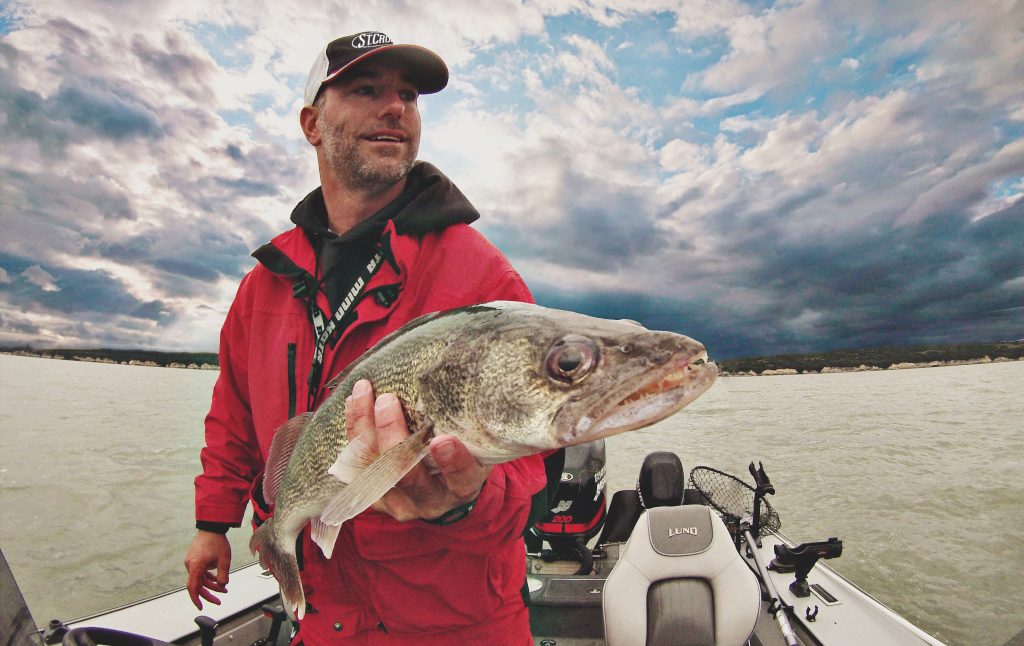
Brian Bashore is a multi-talented and multi-faceted angler, wearing the hats of fishing guide, tournament pro, fishing promotor, board member of the National Wildlife Federation, and President of the National Professional Anglers Association (NPAA). He also has experience in home-building, insurance, and mortgage brokering, as well military tours of duty in Iraq and Afghanistan. He lives in Sioux Falls, SD and fishes across the Midwest, while primarily guiding on the big Missouri River reservoirs. At this time of year, action is upstream on these impoundments:
> Brian: “You find the warmest water up toward the dam. The rocky shorelines and structures there provide spawning habitat, and the flow attracts tons of baitfish. They’re natural magnets for walleyes. On smaller river systems, the tailrace itself is the hotspot, but below the big dams, the adjacent area is often too deep, so the best bite is downstream, anywhere from a few hundred yard to a few miles.”
Over the years, he’s found that current can be your friend, as it can help anglers to present baits in the most natural way:
> “Walleyes will be facing into the current, so you want to approach them from upstream, moving downstream toward them. Try to present baits at the same speed as the current. I do this by keeping the boat pointing upstream as I slowly drift downstream. Use the trolling motor to keep yourself in line and to slow the drift if needed. Slip downstream and move left or right to drop lures onto key structures or pods of fish.
> “I have a new Hummingbird MEGA Imaging transducer on my Minn Kota trolling motor and it provides a great picture of the bottom below and where fish are positioned. In down-imaging mode, you can see walleyes suspended in deep standing timber, something you never could do with standard 2D sonar.”
Presentation particulars:
> “We’re dealing with water that may range from the mid-30s into the mid-40s in this early period. I favor tear-drop-shape jigs with a 3” Berkley Gulp! Minnow. You can sometimes find fish among shoreline rocks in 3-10’. In that depth range, I cast to them, as they’re easily spooked by the boat.
> “The rocks warm up quickly and provide current breaks, so they’re always a high-percentage target. But in other stretches, we fish vertically with a heavier jig and Gulp! Minnow, working it with the flow in water that may be 20-35’.
> “For years we used minnows but Gulp! works so well that I use it all the time. Walleyes love its flavor and Gulp! Minnows stay on the hook much better than real ones. In these river systems, you have other species — catfish, saugers, drum, and white bass pecking at your baits. You need to rebait regularly with livebait, but Gulp! stays on the hook well.”

> “With your electronics you can define the depths where baitfish and walleyes are holding, which can change from day to day in these big systems. For jigging straight down, I like the 6’ 3” St. Croix Eyecon rod. This shorter rod minimizes distance from the boat, so you can keep the lure right where you want it and on the sonar screen.
> “I use braided line on my jigging outfits, with an 18-24” leader of fluorocarbon or mono. For a mainline, I spool 8-lb Berkley NanoFil or 10-lb FireLine. Thin braids cut the current well and keep your lure down where you want it.
> “As the water warms up, we switch to trolling crankbaits on leadcore line, and that can carry you right through the summer period. I start with Rapala Shad Raps, as they’re deadly in colder water.
> “In later spring, I focus on 20’ breaklines, pulling lures like Berkley Flicker Minnows and banana-shaped baits like the good old Cotton Cordell Wally Diver. Some of the locals rely on bottom-bouncers with minnows, and they work as well. For livebait, shiners work best but they can be hard to get in spring. Otherwise, go with fatheads.”
3. Living on the edge with Tom Neustrom
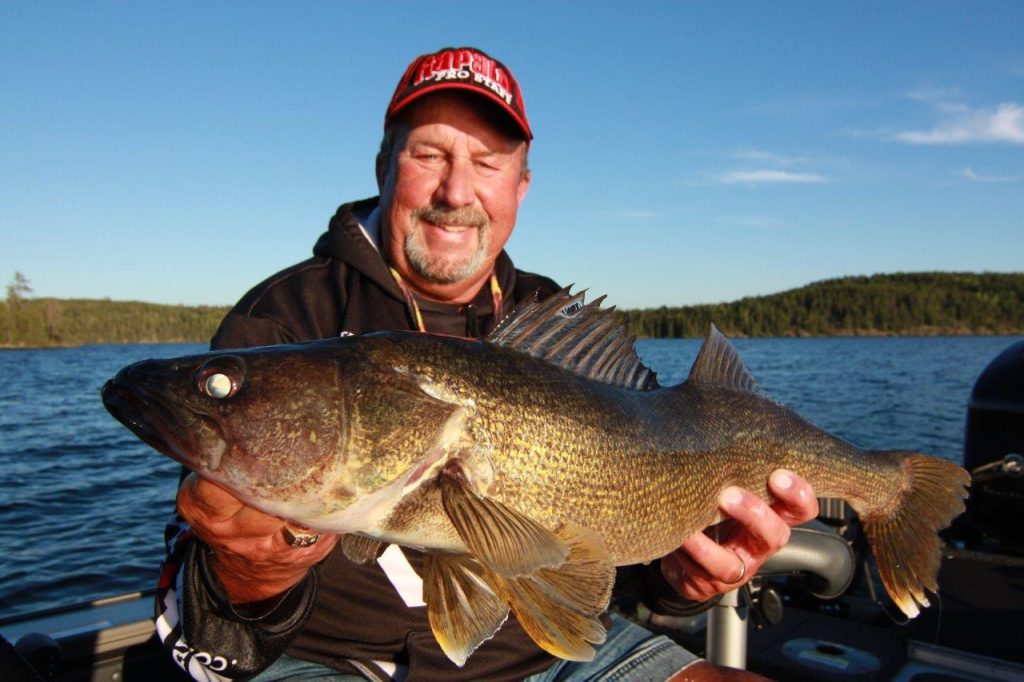
Tom Neustrom is one of the most revered walleyes guides in MN, having put customers on incredible catches for decades. To keep clients happy, the key is to find fish fast and he knows just how to do it:
> Tom: “During this early-season period, I’ve found a jig and minnow to be the top option on lakes of all sorts, and in all sorts of conditions. At this time of year, you find walleyes between the shoreline and the first major breakline to deeper water. Look for areas where the slope is not too steep.
> “For years, we tended to fish along shorelines where the wind had recently been beating. But after a lot of experimenting, I’ve found that not to be true in many cases. But I’ve found that it’s easier to fool shallow walleyes in water that’s murkier due to wind or current. Fortunately, the process of ice-out tends to stir up lake sediments and the shallows are cloudier than later in the season. That makes it easier to sneak up on walleyes. If you’re fishing a super-clear lake, it’s critical to be very quiet and make long casts to avoid spooking fish.
> “Walleyes remain in that shallow zone because of the abundance of baitfish there, as well as its relative warmth, compared to the depths. Keep an eye out for birds feeding too, especially loons or gulls. If you see activity, head in that direction.
> “Walleyes like to hold shallow — but near the break — so they can move deeper quickly when cold fronts come along. When a front hits, we start marking fish in 16-20’. You can still use a jig and minnow to catch them, just increase jig weight up to 1/4-oz.
> “I like to cast instead of dragging a rig or jig. That allows you to define the depth preference of walleyes more easily and it tends to keep folks thinking and active, not just holding onto the rod.”
Presentation particulars:
> “The key to catching shallow walleyes is presenting the jig and minnow in the most natural fashion possible, so we use 1/16-oz jigs, upsizing to 1/8-oz if it’s a bit breezy or deeper.
> “Walleyes can be lethargic after the spawn, and the water is still chilly as well. My favorite jig for this situation is the VMC Neon Moon Eye Jig. It’s pill-shaped so it falls easily and actually fishes heavy for its weight, due to its slim profile. The key is to present it with a subtle lift-and-drop action.
> “Some anglers have a hard time learning the jigging motion required for this technique. In that case, I have them use either a split-shot rig (1/8- or 3/16-oz split shot) with a hook and lip-hooked minnow on a #2 VMC Octopus Hook, with just enough weight to gently fall. A light slip-sinker rig works, too.
> “The best rod for these livebait techniques is a 7’ medium-power spinning rod with a soft tip. Walleyes will start to load the rod when they bite, so a stiff rod doesn’t work. Simply raise the rod to set the hook and the battle is on!”
4. Coping with clear water: Brian “Bro” Brosdahl
Brian “Bro” Brosdahl has made a name for himself through his guiding, tournament success, and his ability to teach anglers the benefits of new tackle and techniques through seminars and interviews. He often fishes natural lakes of MN, where zebra mussels have taken hold:
> Bro: “In a lot of lakes, the water is much clearer than it was just a decade ago. When I’m guiding in spring, the pressure is on as folks want to catch fish. One benefit of guiding is that we can run several different setups and see what’s working best. I usually give my customers rigs that have been working while I fish something else, for comparison.
> “I generally look shallow for fish, but it doesn’t take much to push them deeper, so you have to experiment. I do a lot of Side-Imaging with my Humminbird electronics to spot little trenches and ridges that attract walleyes at this time of year. Stay where you can’t see bottom…moving deeper when it’s sunny and calm, and shallower when it’s breezy and cloudy.”
Presentation particulars:
> “I use Northland’s new Long Shank Fire-Ball Jig a lot. It has a long-shank hook — with a good gap to it — ideal for livebait or softbaits. The 1/8-oz model is the go-to weight in spring. Day in and day out spottail shiners are the best bait…they’re what walleyes eat every day in most of our lakes. If they’re hard to get, go with redtails or small creek chubs.
> “We also fish short rigs a lot, particularly when the bite is real tentative. With a mainline of 10-lb braid, I run 10-15’ of mono, linked with back-to-back uni-knots. For this setup, leaders of just 2-3’ work great. Contrary to some opinions, walleyes are not in the least spooked by sinkers. Short rigs are easy to cast and work great on shallow walleyes. For weight, all you need is split shot or a 1/16- or 1/8-oz bullet weight in depths to 10’. I use #4 colored Gamakatsu hooks for minnows, or #6 for leeches.
> “Braid helps you feel the bite better and mono gives a little cushioning effect so you don’t pull the bait away from fish too soon. And it’s important to use a rod that isn’t too stiff. I use a 7’ 6” medium-power St. Croix Legend Elite rods often. But for jigging on windy days, I switch to a short rod, like a 6’ 3” model that helps to control the line better in wind.”

> “Walleyes can be mobile when we get fronts and strong winds in spring. Check out as deep as 30’, where they may go to find stable conditions. But on murky lakes and river backwaters, they stay shallow and you can get away with fishing braid all the way to the jig or hook. I recently got Humminbird MEGA Imaging on my stern sonar and it provides amazingly clear images.
> “It’s weird, but I’ve found that hook color can make a lot of difference in clear lakes. I use an Aqua-Vu camera to verify fish species and how they bite — I highly recommend it. You’ll be amazed by what you see sometimes. On some lakes, walleyes like a green hook — in others it’s orange or pink. I can test this preference by having clients fish different colors and see how they do.
> “My other recommendation is to make use of shallow-water anchors. I have a pair of 15’ Minn Kota Talons that I wouldn’t fish without. I prefer using them instead of the Spot-Lock feature on my Minn Kota trolling motor, since the motor keeps pushing water, which can spook shallow fish. Put the poles down and stay quiet in your approach. They’re especially valuable when it’s windy.
> “If you want to keep catching fish, don’t take too many from any one school…. Don’t keep whacking ‘em, or what I call, ‘blowing up the school.’ Keep maybe three to five from a big school and leave. I use the analogy of donating blood. They take a pint and leave the rest, so you don’t croak and can come back to give more!”
5. Rippin’ up spring ‘eyes with Tony Roach
Tony Roach has gained a reputation for his guiding on MN’s Mille Lacs, but he covers a lot of territory, while putting anglers on all species of fish. But as the nephew of Gary “Mr. Walleye” Roach, he spends a lot of time chasing white-tails. He points to the shallows as the place to be on big lakes through May and even early June:
> “I’ve fished with all sorts of rigs and lures over the years, but I’ve recently settled on one deadly approach at this the of year…fishing rather aggressively with Rapala Rippin’ Raps. I compare it a little to the deadly Jigging Rap, but it falls slower and has more subtle action, which is ideal in spring.
> “A Rippin’ Rap falls nose-first, which is a natural-looking posture for walleye prey. We fish the #5, #6, and #7 models, but the #6 (2.5” and 1/2-oz) gets most play in spring.
> “Work the lure along the deep side of rock ridges and over depressions where walleyes often hold at this time of year. Bottom transitions from sand-to-rock are also key locations, and the Rippin’ Rap is ideal for fishing those types of areas.”
Presentation particulars:
> “Long casts help you cover a lot of water, and Rippin’ Raps cast very well. I fish them on thin braided line (6- to 10-lb test), which helps in that regard, with a fluorocarbon leader of 10- or even 12-lb test. Without a leader, the back hooks of the Rap sometimes snag the braid on a cast, wasting time.
> “Also, I fish Mille Lacs a lot, along with other lakes that have zebra mussels. The heavier fluorocarbon cuts down on the number of break-offs due to its abrasion-resistance. Moreover, a lot of pike are up shallow in spring, and it gives a bit more protection to have a 12-lb leader. And walleyes don’t mind a bit.
> “The retrieve is very important and it takes a little getting used to, as you learn the correct cadence. It’s not a fast ripping retrieve…the lure actually moves forward at a moderate pace, but with a lot of up-and-down motion. Walleyes typically bite either on the fall or when the lure first hits bottom, so you want to maximize those situations.”

> “As soon as the lure hits bottom after a cast, raise it up off bottom so it can fall again. It should contact bottom for only a split second before rising. After a few hours of doing this you’ll have this cadence down and you won’t have to think much about it.
> “To fish this way, rod selection is important. I favor a medium-light rod from 6’ 8” to 7’ 2”. And I like rods with an extra-fast tip section, since you often have to set hooks solidly from a distance. The softer action and length allow you to sweep the lure off bottom cleanly and keep the cadence right.
> “Clients that haven’t fished Rippin’ Raps this way can be a bit dubious, but as I explain the technique and they see me catching fish, they pick it up quickly. Once they’ve caught a few walleyes with it, they’re believers!”
There you have it: some of the most solid early-season walleye fishing insights on the planet. These guys breathe walleyes and they offer divergent approaches that will work on all sorts of waters near you. Think shallow, watch your electronics, focus on key structures, keep checking areas, and you can’t miss!
– Steve Quinn
Sign up another fish-head!If you’re forwarding Target Walleye to a friend who loves to walleye-fish or want your fishing buddies to get these emails, just send us their email addresses and we’ll take care of it! (We won’t sell the addresses, use them for spam, etc.) |
|
Check this stuff out! |
![]()
|

